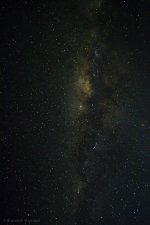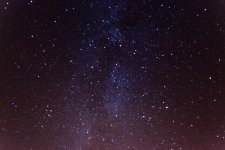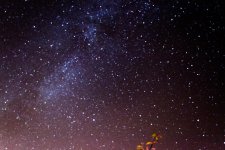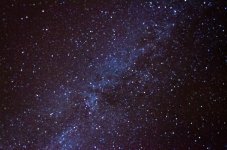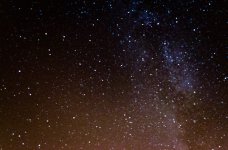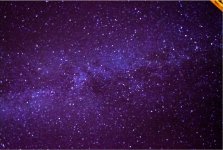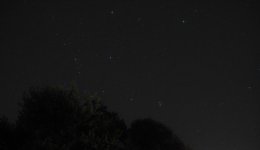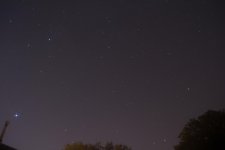Just spotted this thread, would have missed it since I have a D3200 now, had a D50 before.
Just a few personal tips from my experience:
ISO - Don't go up to high ISO's or you'll suffer from major noise issues, every ISO you go is a compromise, I'm shooting star trails at 100/200 or 400, I was using ISO 800 for the Perseid meteors but only because I was after dim meteors; and ended up over-exposing a fireball! If you're gonna do a 30 minute star trail my advice would be to use ISO100 for sharpness and definition, but if you are trying to get a still shot of the Milky Way (no star-trailing) then you need as fast a lens as you have; and perhaps go up in ISO a bit - I found that at 18mm I can shoot 7 seconds without noticeable trailing. But one day I want an F1.4 lens for this job.
Focussing - I'm using the 18-55 kit lens which gives me the ability to zoom in to 55mm on a star like Vega/Sirius/Capella or the mighty Jupiter; whatever the brightest object you can see is .. focus on that; assuming you have good eye sight, then pull back to 18mm and compose your shot. Do a test shot to verify your focus too.
It's actually a pretty simple routine once you've done it a few times, then its all about composition and location - you need to get as far away from street-lighting as you possibly can; the orange glow of towns and cities is the thorn in the side of astrophotography. Then making a shot interesting by including familiar constellations, and foreground objects like tree's, silhouettes etc.
I did these examples with my old D50 (sorry if that makes it off-topic), it's not all about the equipment; its about creativity : )
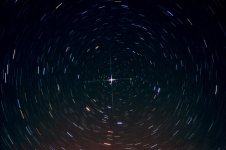
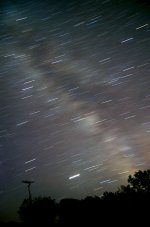
(First image is 20 mins at 70mm pointed at the north star with a star-filter (cross screen filter). Second is 14mins at ISO200. Both with lots of post processing to reduce light pollution etc.)



